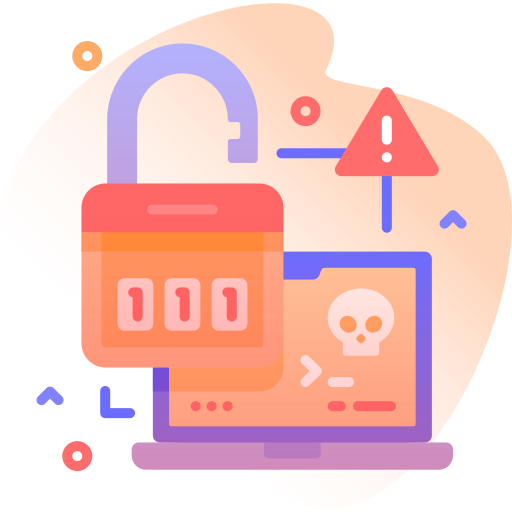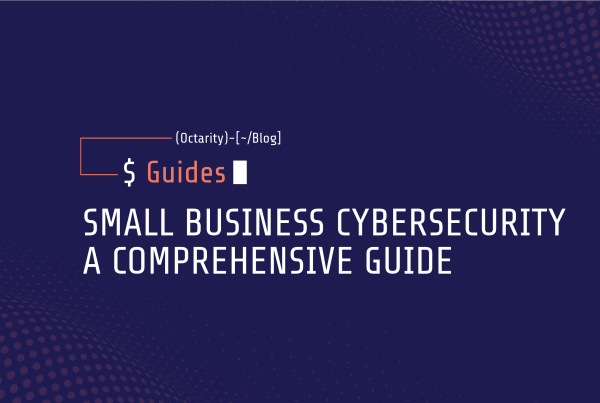In our technologically advanced age, small businesses often find themselves questioning how hacks cost businesses money. While large corporations make the news with their extensive breaches, it’s the small enterprises that face severe financial repercussions. $1 million dollars for a Fortune 500 company is nothing compared to R100,000 for a small South African business. Many small business leaders assume they’re not hacker targets. Yet, the truth reveals a different picture: cyber threats can and will target businesses of all sizes, emphasizing the urgency of understanding how cybersecurity and hacks drain financial resources.
Imagine your business’s crucial data being held for ransom. This is the stark reality of ransomware attacks. Now think about the consequences of a data breach: stolen customer information can result not only in hefty regulatory fines but can severely damage the trust your customers have in you. Such breaches can disrupt business operations, leading to lost sales and hampered productivity. On other occasions, the very essence of your business, its intellectual property, gets stolen, potentially benefiting competitors. Lastly, businesses face the high costs of recovery after an attack, working tirelessly to mend compromised systems and data.
As we delve deeper into this article, we will examine the intricate details of how hacks cost businesses money, equipping small businesses with the knowledge to protect themselves more effectively.
Table of Contents
How Ransomware Hacks Cost Businesses Money
Ransomware attacks have emerged as one of the most crippling cybersecurity threats, especially highlighting how hacks cost businesses money. These malicious attacks involve hackers encrypting a victim’s files and demanding a ransom in return for the decryption key. Small businesses, often ill-prepared for such events, find themselves trapped between paying a hefty sum or risking permanent data loss.

A notable instance was the WannaCry ransomware attack in 2017, which impacted businesses worldwide, causing losses estimated in the billions. While large companies were affected, small businesses felt the brunt, with many paying ransoms or spending significant sums on recovery efforts. According to a report by Coveware, the average ransom payment in 2022 was $408,644. This staggering sum, often unexpected, can devastate a small business’s financial standing.
Beyond the direct financial losses, ransomware attacks tarnish reputations and erode customer trust. They serve as a stark reminder for businesses of all sizes, but especially for small enterprises, to comprehend how hacks cost businesses money and the importance of proactive defense measures. Did you know that you can get protection from this type of hack starting from as low as $3 per month? Can you really afford not to?
Business Email Compromise (BEC)
This is a sophisticated scam targeting businesses, primarily through email-based fraud. The primary aim is to deceive employees, especially those handling funds, into making unauthorized transfers or revealing sensitive information. Understanding how hacks cost businesses money is paramount, and BEC serves as a clear example.

In one notorious case, an Austrian aerospace firm, fell victim to a BEC scam in 2016. Cybercriminals impersonated the CEO and requested an employee to transfer approximately $47 million for a fake acquisition project. Despite being a technologically advanced firm, the human element proved to be the weakest link, leading to significant financial losses.
According to the FBI’s Internet Crime Complaint Center, BEC scams were responsible for over $1.7 billion in losses for businesses in 2019 alone. The average loss from such scams is around $75,000, but this can rise into the millions depending on the size and nature of the business. These figures illustrate just how dire the consequences can be and underscore how hacks cost businesses money. While these examples may sound far from home, in our South African client base we have clients who have lost millions of rands before getting protection.
Did you know about 91% of all hacks originate from the inbox?
Deloitte
To avoid falling prey to such attacks, businesses must foster a culture of cybersecurity awareness. Regular employee training, two-factor authentication, and stringent verification processes for financial transactions can provide a robust defense against BEC threats. These measures combined with an Advanced Email Protection solution could reduce your cyber risk by up to 90%.
Downtime and Business Disruption from Security Events
When cyberattacks strike, the ensuing downtime and business disruption can have a crippling financial impact. A clear demonstration of how hacks cost businesses money is seen in the consequences of system outages, lost productivity, and missed opportunities.

Take the case of Maersk, the world’s largest container shipping company. In 2017, the NotPetya ransomware attack disrupted their operations. This incident forced Maersk to halt its terminals worldwide, causing a staggering $300 million in losses, predominantly due to business interruption and equipment reconfiguration.
Research from other sources suggests that downtime costs small businesses anywhere from $8,500 to $74,000 per hour, showcasing the enormous financial stakes involved. In South Africa an insurer was attacked and their systems were offline for over 2 weeks. If your business was unable to operate for 2 weeks what would that cost you? The fact that such disruptions, often caused by cyber threats, can hold operations hostage shines a spotlight on how hacks cost businesses money.
For businesses to shield themselves, having a robust disaster recovery plan, regular backups, and cybersecurity awareness among employees is crucial. It’s not just about protecting data but ensuring business continuity in the face of threats. Want to find out more about how to put together a comprehensive strategy to protect your business: Start here
Regulatory Fines and Legal Costs
One undeniable dimension of how hacks cost businesses money arises from regulatory fines and legal implications. In today’s digital landscape, many countries have stringent data protection regulations. When breaches expose sensitive customer information, companies aren’t just contending with the immediate fallout. They often face hefty fines and can be dragged into costly legal battles.

A high-profile instance is the British Airways data breach of 2018. Attackers exploited vulnerabilities, compromising the data of half a million customers. As a result, the UK’s Information Commissioner’s Office imposed a record £183 million fine on the airline under the GDPR. This situation is a stark reminder of the financial consequences businesses can face when cybersecurity is not prioritized.
In South Africa, the POPI Act makes provision for fines of up to R10 million. More than 500 violations have been reported to the Information Regulator by 2023 but no fines have been issued as yet.
To navigate this landscape, businesses must be proactive. Keeping abreast of the latest regulations, regular compliance checks, and investing in cybersecurity measures are vital. When evaluating how hacks cost businesses money, the potential for legal entanglements and fines should be top of mind for every organization.
Loss of Intellectual Property or Data
A cornerstone of modern business strategy is the unique intellectual property (IP) and data that companies possess. But imagine, within moments, years of proprietary research, strategic plans, or customer data gets stolen. This reality starkly outlines how hacks cost businesses money. The theft of intellectual property can lead to a competitive disadvantage, eroding market share and severely damaging brand reputation.
One particularly disturbing case was the 2014 hack of Sony Pictures. The attackers released confidential data, including upcoming movie scripts, sensitive emails, and employee details. The intent wasn’t just data theft but a deliberate act to damage the company’s reputation and finances. Along with the immediate monetary costs of managing the breach, the stolen data, particularly the intellectual property, had a long-term impact on the company’s revenues.
Quantifying the cost of IP theft is challenging due to its far-reaching consequences. A report from McAfee and the Center for Strategic and International Studies estimated that the theft of IP costs businesses between $450 billion and $600 billion annually. This staggering sum encompasses not just the direct value of the stolen information but also the lost opportunities and competitive edge.
Companies should be vigilant in protecting their IP and data by constantly updating their cybersecurity protocols and training their staff. Understanding how hacks cost businesses money in the realm of IP and data theft underscores the gravity of ensuring maximum protection in this digital age. Data loss prevention systems are simple to install and can prevent this data from being accessed or shared with unauthorized parties.
Summary
The digital landscape, while offering myriad opportunities, also presents significant vulnerabilities for businesses. Here’s a recap of the key ways hacks cost businesses money:
- Ransomware Attacks: Holding critical business data hostage, these attacks can demand exorbitant ransoms, sometimes reaching millions, not to mention the resultant operational disruptions.
- Business Email Compromise (BEC) and Fraud: By impersonating high-ranking officials, hackers can deceive employees into making fraudulent transactions, leading to substantial financial losses.
- Downtime and Business Disruption: A cyberattack can halt operations, causing businesses to lose valuable time, customers, and revenue, a setback that can take years to recover from.
- Regulatory Fines and Legal Costs: Non-compliance with data protection regulations can result in hefty fines, coupled with potential lawsuits from affected parties.
- Loss of Intellectual Property or Data: The theft of sensitive business information can erode competitive advantage and damage a brand’s reputation, leading to long-term revenue impacts.
As we delve into the interconnected world of business, understanding these cybersecurity pitfalls is paramount. Small and large businesses alike must prioritize robust cybersecurity measures to safeguard their assets, reputation, and ultimately, their bottom line.





